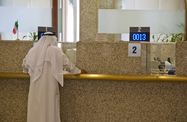Investors on the Amman Stock Exchange (ASE) received a much-needed fillip recently when the government announced plans to step in to help some local companies that are facing financial difficulties.
The state has moved to assist troubled local firms, working with the banking sector to offer funds and to reschedule debts. These efforts are aimed at reviving the national economy and provide employment opportunities for Jordanians, the country’s industry and trade minister, Hani Mulki, said on March 27.
“The majority of troubled firms are not operational now but they have substantial assets,” he said. “So we hope they agree on administrative and financial restructuring to be able to help them stand up again.”
The move will likely be well received in Jordan’s capital markets, which are struggling to shake off the effects of the global financial crisis, as well as regional unrest that has dented short-term investor confidence, with trading levels and indices on the ASE well off its buoyant pre-recession highs.
Currently there are 277 companies listed on the ASE, with the financial and real estate sectors being the most heavily represented, though there is a broad cross section of companies from across the economy, with services and industrial also among the leading indices.
As of the beginning of the year, the market capitalisation of listed shares on the ASE amounted to $31bn, representing 122.7% of GDP, down from 150% a year before. Heading into April, the ASE index was hovering around 2216 points, less than half of the level of mid-2008. Over the past two years, expansion of the ASE has slowed, with just five companies listing on the market in 2010, less than half the number of new entries for 2009.
Interest from foreign investors has been on the rise this year, however. In 2010, non-Jordanian investors accounted for 15.5% of overall trading value, with sales outnumbering buys, resulting in $20.6m in foreign holdings on the ASE. To date, 2011 has seen a return of overseas players to the exchange, with the value of trades by foreign investors for January and February comprising 18.6% and 19% of the total, respectively, while investment levels increased by $4.6m and $7.6m for the first two months of the year.
It may be some time before the exchange regains some of the vibrancy it enjoyed in the past decade, with some experts predicting the market will remain flat well into this year. According to Jawad Kharouf, the president of the Association of Certified Capital Market Professionals, while some capital has been flowing into the bourse, internal problems will restrict performance, despite positive first-quarter 2011 reports from some firms.
“The bourse still suffers from a credit crunch and from several financially troubled companies. This is what really affects the bourse, and I do not expect major improvements in the second quarter of this year,” Kharouf told local press in late March.
Apart for the requirement for some listed companies to strengthen their individual positions, a recent report issued by regional investment bank EFG-Hermes also points to the need for Jordan’s capital markets to broaden their base and encourage more companies to list in order to attract more investors and stimulate trading activity.
Overall, the bank’s “Macroeconomic Heat Map” for 2011 ranked Jordan 10th out of the 11 Arab economies surveyed, ahead of only Egypt. The study – released in mid-March – covers four categories: growth outlook indicators, other key macroeconomic indicators, socioeconomic indicators and stock market investability.
While the report found that the ASE offered a high level of access to foreign investors, it ranked the stock market’s corporate governance and regulatory framework as only medium. Just as significant was EFG-Hermes’ assessment of the market’s breadth and depth, which was rated as low, pointing to the relatively few companies listed on the exchange and its limited activity.
With relatively low per capita income levels of just under $6000, for many of Jordan’s citizens the appeal of investing on the ASE may be limited, leaving the field to local and foreign institutional and corporate investors.
Though it may be some time before the ASE rebounds to the heights of 2008, the continued strong foreign presence in the market bodes well for the future, with non-Jordanian investors obviously retaining their faith in the exchange and its listed products. If the domestic economy can shake off the effects of the recession and continue to post growth, further capital should flow into the market, stimulating trading activity and boosting values.

